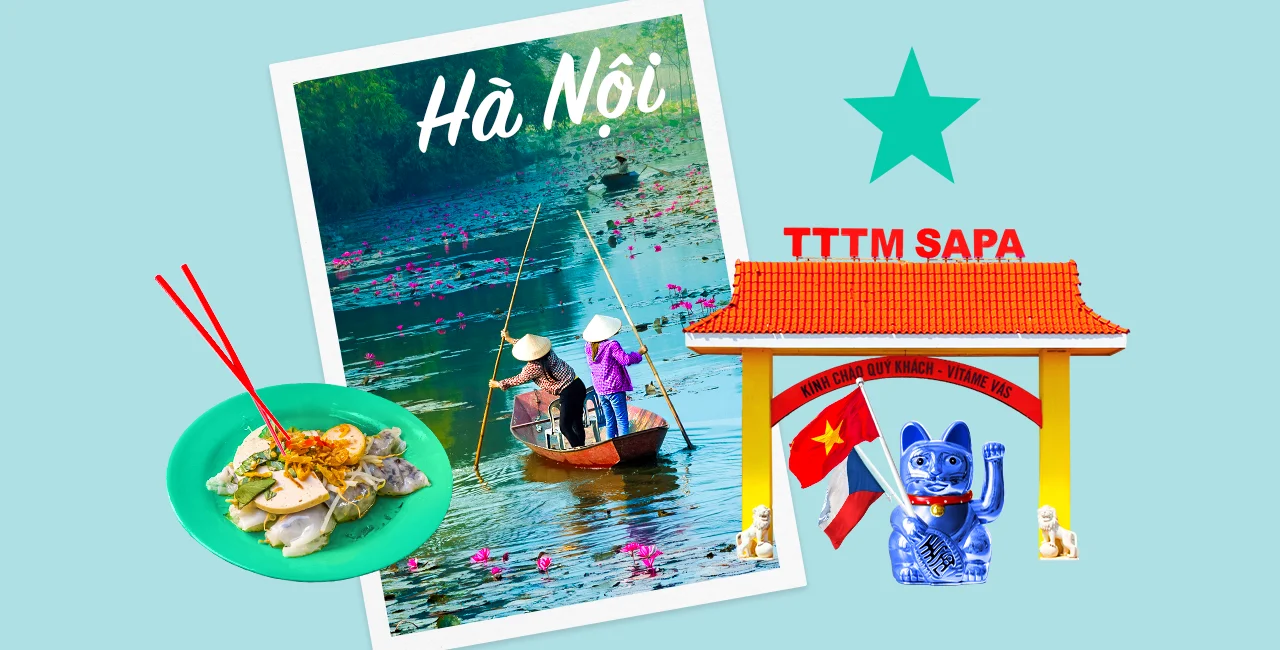The Sapa market is still a relatively undiscovered gem, far removed from Prague’s medieval castle and Renaissance squares. But according to Nicolas Pham, a Prague-based English teacher born to a Vietnamese family, the market has, in fact, been discovered by one group: the Czechs who increasingly come to shop, get haircuts, and grab lunch at this 250,000-square-meter trade center in Prague’s Libuš district.
Since its inception in 1999, Sapa has evolved from a bustling marketplace with over 1,000 vendors into a vital epicenter for the local Vietnamese community. And it’s changing. Next-generation Vietnamese are revolutionizing the way “tourists” (Sapa locals’ name for Czechs) experience the market. Vendors are embracing digital platforms, stores catering to mochi and bubble tea enthusiasts are popping up, and organized tours have become a thriving industry.
Among them is Sapa Trip, which has significantly contributed to connecting Czech and Vietnamese cultures by offering private tours for schools and companies, food tours, cooking classes, date nights at Sapa, trips to Vietnam, lectures, and even language courses.
Banana children: 'It sounds offensive, but it's not'
During a three-hour guided Sapa Trip tour, we uncovered many facts about the largest Vietnamese market outside of Vietnam. Our guide, Nicolas, started the tour by sharing his personal story, which reflects the reality of the young generation of Vietnamese Czechs. He says they are referred to by Czechs and within their community as “banana children” (yellow on the outside with a white center).
It’s not offensive [the term banana children],” Nicolas informs us. “It’s true. We may look Vietnamese on the outside, but we speak Czech better than Vietnamese.”
He mentions that he has only visited Vietnam a few times and that his Vietnamese language skills are limited to basic conversations at home. Generation gap aside, the Vietnamese community in Czechia remains close-knit. Nicolas notes that although intermarriage with Czechs is becoming more accepted, it is still somewhat discouraged by more traditional families.
We also learned, for instance, how the Vietnamese are given their Czech names (Czech friends typically choose them), that they are the third-largest minority population in Czechia (thanks to a unilateral agreement between Czechoslovakia and North Vietnam), and why his generation is eschewing traditional weddings (too long, too much karaoke).
We discovered that Sapa began life in the late 90s as a textile distributor on the grounds of a former communist-era meat-processing plant. It has grown to encompass dozens of travel agencies, nail salons, barber shops, doctor’s offices, and a sizeable bulk grocery store, Tamda Foods.
The tour also encompasses a section devoted to Buddhism. We visit Sapa’s prayer-flag-bedecked temple, where altars laden with fruit and snack food pay tribute to the gods and ancestors who have gone before, a silent sanctuary open to all amid the noise of the market activities.
Sapa's delicious secrets uncovered
Despite the cultural elements, our tour was focused mainly on food. We began with a stop at the Sapa Trip info center and gift shop to taste Vietnamese coffee and tea, nibble on crispy chili crickets, and learn about the mountainous landscape, cuisines, and culture of the market’s namesake city in northwest Vietnam.
Today, its seemingly endless aisles of produce vendors and pho kitchens once catering to shopkeepers – now sell everything from sweet Vietnamese coffee to jewel-colored fruit desserts to an increasing number of Czech customers.
During our market tour, we weave in and out of produce stalls selling pak choi, durian fruit, water spinach, dried noodles, frozen seafood, and cooking essentials like fish sauce. We stop at Chè Sài Gòn to sample caramel flans and pick-and-mix dessert cups, which start with a base of yogurt or coconut milk and pile on toppings like tapioca pearls, grass jelly, fresh coconut shreds, taro paste, mango, and jackfruit.
Many restaurants in the cramped alleyways between the vast textile markets serve just one food (fish soup, grilled duck, rice rolls, or crispy pancakes). We pass Pho Tung, widely considered Sapa's best pho spot, and Hai Há, known for its bún cha, pork belly. In addition, a deli, Am Thuc Viet, lets you pile up on dumplings, cold salads, grilled and braised meats, and pay by weight.
Sitting down to tradition
The tour ends with a proper sit-down Vietnamese meal at restaurant Ho Sen Quan Lotus, shared in the family style. Trays of braised and caramelized catfish, soup, pork belly, steamed rice, and bitter greens arrive as we settle into the restaurant’s large back room.
Nicolas gives a quick lesson on the meal’s order (rice first, soup last) and proper etiquette: the family’s youngest member always serves the oldest first; elder worship is an integral part of Vietnamese culture.
As we pick up our chopsticks and dig in, I ask Nicolas if the vendors mind tours like this, which bring curious outsiders to observe their daily operations. “They welcome it; they know it brings customers to their shops,” he says.
His words testify to the business savvy of the new generation of entrepreneurs guiding the market’s success and to Sapa Trip’s vital role in creating experiences that feed cultural harmony.
For anyone overwhelmed about where to begin, the tour offers an English-friendly look behind the scenes of Prague’s Little Hanoi and, for those like me who’ve already experienced Sapa, a compelling reason to revisit.












 Reading time: 4 minutes
Reading time: 4 minutes 

























